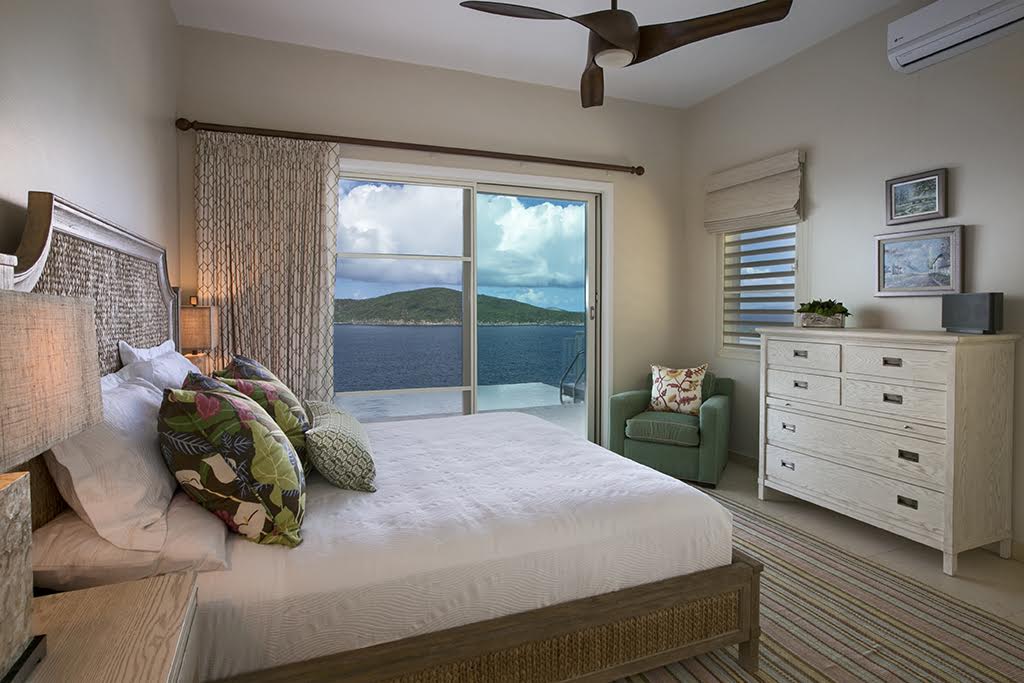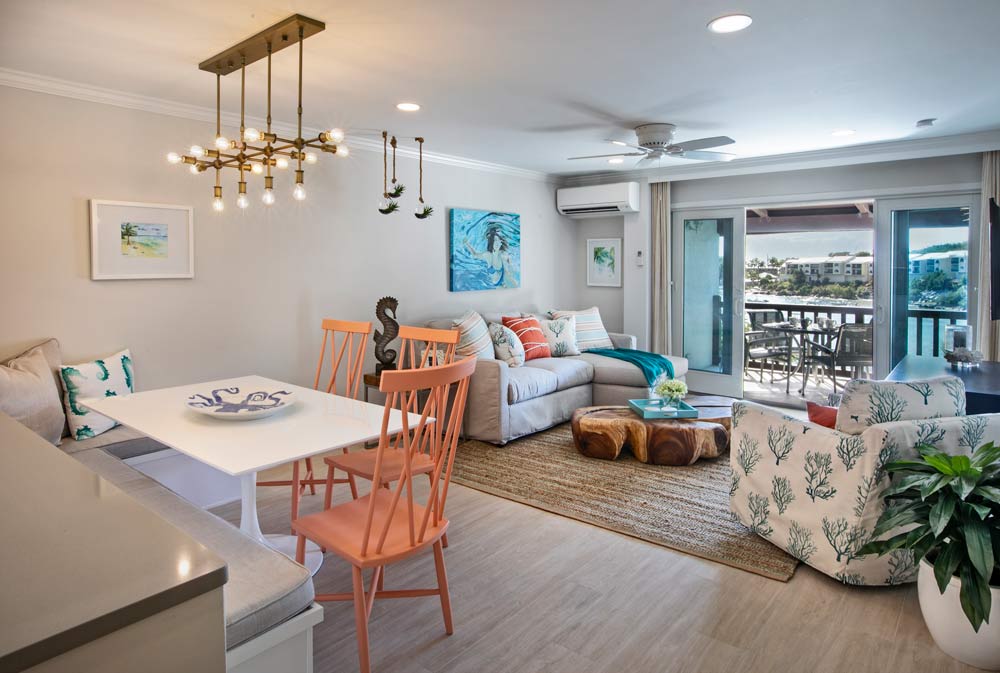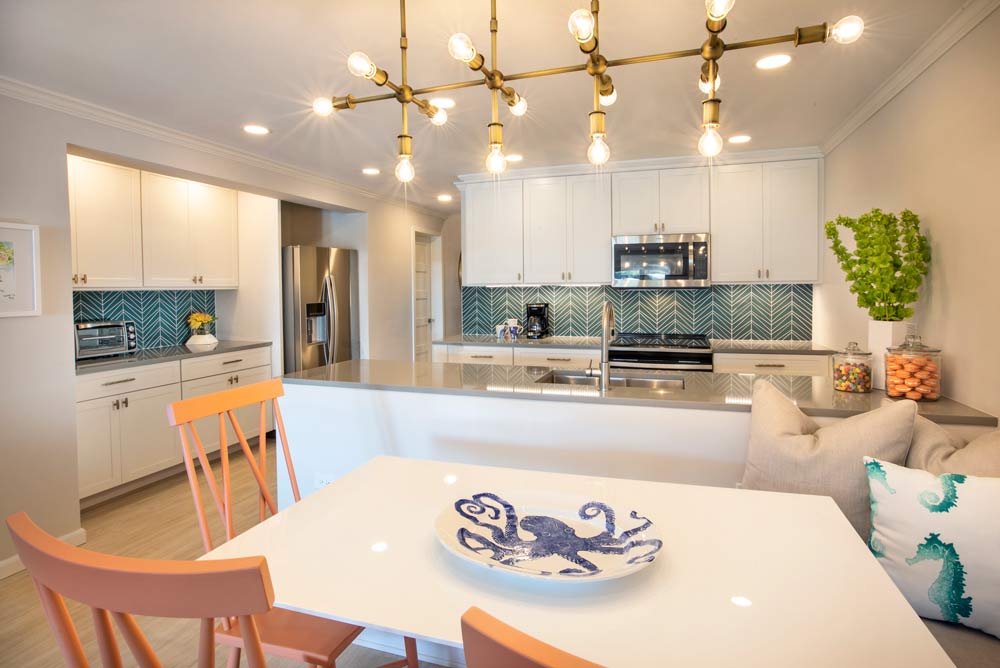Designing and decorating an Island home is much different from one in a city or suburb in the North. Once you select your property, there is a lot to consider in the planning stages. From incorporating views, to choosing materials suitable for the climate, it’s easy to slip up during the process.
Clients dream of enjoying their ideal vacation home. They long for a space complete with a beautiful outdoor area, tropical decor and of course, an enchanting view. When it comes to the tropics, there are specific things which clients need to consider when designing or decorating an island home.
With all you invest in a holiday home, you don’t want to miss a moment relishing the beautiful surroundings. The primary focus when designing a vacation property should be incorporating the view. For ease and simplicity, our clients choose to have professional guidance when building their custom vacation home.
Tiffany Cassidy, Lagnappe Custom Interiors.
The following is a list of common issues which occur when designing an island home:
You’re not maximizing the view.
Clients typically reside in locations which lack beautiful, natural surroundings, especially tropical ones. When they purchase a vacation property in the islands, they choose a place with an incredible view. Not maximizing the opportunities to see it is the number one fall when investing in a vacation home. Of course, you can step outside and relish the sea and vegetation, but you want to enjoy the vistas while indoors too. A builder can help achieve this, but you need to consider how you’re using your windows.
The Fix: Don’t block your view with curtains.
“To be honest, I love curtains more than most people, but not when they cover up the glass on a window with an amazing view,” says Tiffany. “You paid extra for that view, do the drapery right and you can accentuate your view, rather than cover it!”
Modern designs are all about clean, geometric lines, which allow a lot of light. Invest in custom window coverings, such as motorized blinds or roller shades. They can transform a dark room into a beautifully well-lit room looking out to the ocean. Rather than clutter the window, they can be hidden away when not in use with the touch of a button. They allow you to maximize your view by day and sleep in with blackout blinds on your vacation. Motorized blinds integrate with Smart Home technology, such as Control4 and Nest. These high-tech designs also allow you to control settings with timers and amount of light you wish to let in. 
You haven’t clearly defined a focal point for the room.
Again, when on vacation, you want to take advantage of time embracing the tropical surroundings. In most island homes, it should be the view which is the focal point. Of course, clients wish to personalize their home with art, decor, and unique features, but it’s what’s outside which should be the focus.
The Fix: Arrange your furniture around the window.
“You’d be surprised how many homes I go into where the sofa is turned with its back to the view, and the focal point is the TV,” Tiffany jokes. “Pretend the window is the TV with the best view, and arrange seating accordingly.”
From the initial planning stages, make a clear choice to determine which window has the best vista. Arrange your couches, coffee table, and furniture so you’re looking out to the sea, and find a place for the TV last. Consider clever ways to hide your TV, such as a cabinet, or behind frames or a screen. You don’t want to distract from the view when not it’s in use.
Too much Caribbean Color
Colorful pastels of different shades on the Caribbean color palette add to the overall island vibe. While these eclectic colors add to the joy of being on vacation, they can become too much when over used in a home. Too much color can distract from your furniture, decor, and even the view.
“I know, the vibrant colors of the islands are inspiring, we love them too! However, if you paint each room a different ‘Caribbean color’, you will soon find it overwhelming,” says Tiffany.
The Fix: Use nature to inspire color choice
“Inspiration from nature is the best way to go. Use the neutral tones to inform color choice for the ‘big stuff’,” says Tiffany.
The Caribbean color palette doesn’t necessarily need to be bright and bold. It can be playing on coastal colors of light blue, brown, or beige. Think about the shades of the drift wood on the beach, or the color of the sand and stones. Soft shades can inspire as well, like the creamy color of a conch shell. Use these tones for the paint on the walls, tiles, and cabinets. Vibrant shades, like the bright color of the inside of a conch shell, can then be used to accentuate.
“When you keep flooring, walls, and cabinets in understated tones, you can add the bright colors in the accents and accessories, like pillows and bedding. This makes it easy to change your look in the future as well,” exclaims Tiffany. 
Not enough lighting
“We love our large expansive views and indoor-outdoor feel here. Large windows and sky lights provide a room with natural light from the sun during the day. At night, however, if a room is not equipped with the right lighting, it can appear very dim,” says Tiffany.
The Fix: Look to light the room in layers
By layering light, you create atmosphere within a room. Interior designers put together different textures, fabrics, colors and materials together to create the feel of a room. Similarly, layering light is by adding different types of lighting to create a particular mood or feel.
“The first is ambient lighting. It’s the general, overall glow which makes nighttime into daytime. Ambient lighting is often achieved with track, recessed, or overhead cove lighting. You may need professional help to add this to an existing space, but it will be worth it. Second is task lighting. It helps you see to actually do something, like a reading lamp next to your bed, or under-cabinet lighting in the kitchen. Last, there is accent lighting. Is there a pretty painting that needs to be highlighted with a sconce, or a textured wall to be featured? Look for opportunities to decorate with light,” says Tiffany. 
You bought furniture without a ‘space plan’
You fell in love with a gorgeous, comfy sectional you saw in a stateside showroom, but now there’s little room for anything else.Often clients will choose things they see in the showroom, because they like the look. However, they take a guess, and haven’t correctly determined if it will fit.
“It’s very hard to interpret scale in a showroom. Even as a seasoned professional, I am often surprised to measure a sofa in a showroom and find it’s a 108” when I thought I was looking at an 84”. Showrooms are huge, and even large pieces do not look big in that setting,” says Tiffany.
The fix: Measure the room and determine a ‘space’ plan before you shop.
Measure and record the scale of the rooms, including the lengths, widths, and heights of floors, walls, and windows. Bring these dimensions when you shop, and share them with the sales people. They can advise you which items will be scaled correctly for the space. Scale is important, as even if they fit, a space will quickly feel cluttered if the furniture is too big.
“If you are decorating a vacation home, you need to leave space for people and their STUFF!” Tiffany laughs.
Space planning can be challenging. It is worth investing in a designer’s time to get it done correctly.
Your furniture isn’t old, but it’s looking kind of shabby
In a small space, every piece of furniture is used every day. Especially in an island vacation home, your furniture will have a hard life. Island elements like the sun and salt water, and also vacation renters, will wear out fabrics faster. Your space will start to look noticeably less fresh.
The fix: Invest in higher quality furniture
It’s no secret that cheaper furniture will wear out faster. With high quality furniture, the foam in the cushions and frames are made to last longer. There really is a difference in furniture quality, specifically, with the durability of the fabrics. Choose reputable brands, and especially ones recommended by professionals who work in the tropics.
“We love to add machine-washable slip covers to upholstered items. It makes it easy to keep them looking and smelling fresh,” says Tiffany.
Designing and decorating Caribbean vacation homes can be challenging and time consuming. By investing in the help of professionals, such as Lagnappe Custom Interiors, the process can be easy and enjoyable. With experience working with clients in the islands, they provide unrivaled knowledge when planning your tropical getaway home.
Lagnappe Custom Interiors is a full-service interior design firm, specializing in bringing the small niceties to a home or commercial space that make it memorable, functional and yours. Based out of St. Thomas, Lagnappe [LAN-YAP] is led by Tiffany Cassidy who enjoys working with clients to create a home that reflects their style and needs. Tiffany marries her artistic and scientific sides together to bring the residents of the Virgin Islands and continental U.S. an interior decorating service that manages the complex and turns it into beauty. Her goal is to not only make a home prettier, but in doing so, make your life better. Visit www.Lagnappe.com for more information.











